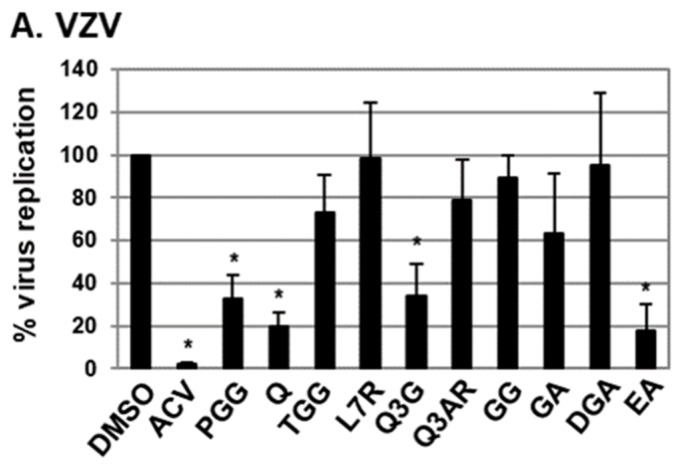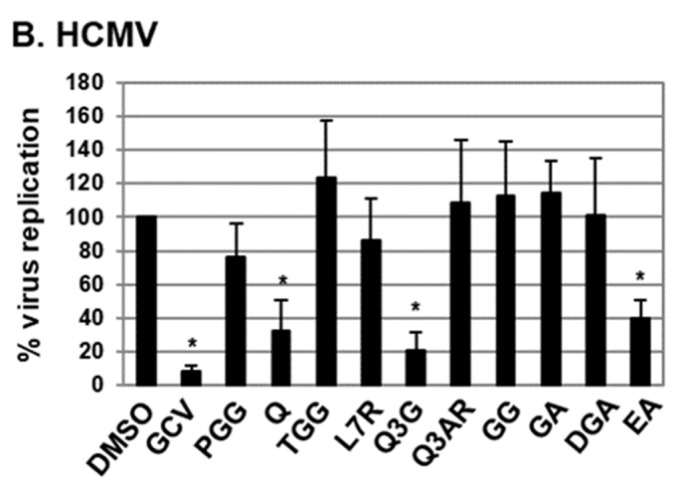Figure 1.
Antiviral activities of chemical components of ethyl acetate (EtOAc) fraction of Elaeocarpus sylvestris (ESE). HFF cells were (A) inoculated with varicella-zoster-virus (VZV)–recombinant laboratory pOka strain (pOka)-infected HFF cells or (B) infected with human cytomegalovirus (HCMV)–Towne strain (Towne) at an multiplicity of infection (MOI) of 0.1 and treated with DMSO, 1,2,3,4,6-penta-O-galloyl-ß-D-glucose (PGG), quercetin (Q), trigalloyl glucose (1,3,6-tri-O-galloyl- β-D-glucose, TGG), luteolin-7-rutinoside (L7R), isoquercitrin (quercetin 3-O-β-D-glucoside, Q3G), quercetin-3-O-arabinoside (Q3AR), galloyl-D-glucose (1-O-galloyl-β-D-glucose, GG), gallic acid (GA), digallic acid (DGA), and ellagic acid (EA) at a concentration of 20 µg/mL. As a control, VZV- and HCMV-infected HFF cells were treated with acyclovir (ACV, 1.2 µg/mL) and ganciclovir (GCV, 2.3 µg/mL), respectively. At 72 h after infection, total DNA was harvested, and relative amounts of viral DNA determined via qPCR using primers specific for VZV ORF62 or HCMV UL123. For quantitative assessment of the relative abundance of viral DNA between samples, the value of virus-infected cells treated with DMSO was set at 100. Significant differences between samples were determined using Student’s t test (significant at *p < 0.05). Data shown here represent three independent sets of experiments.


